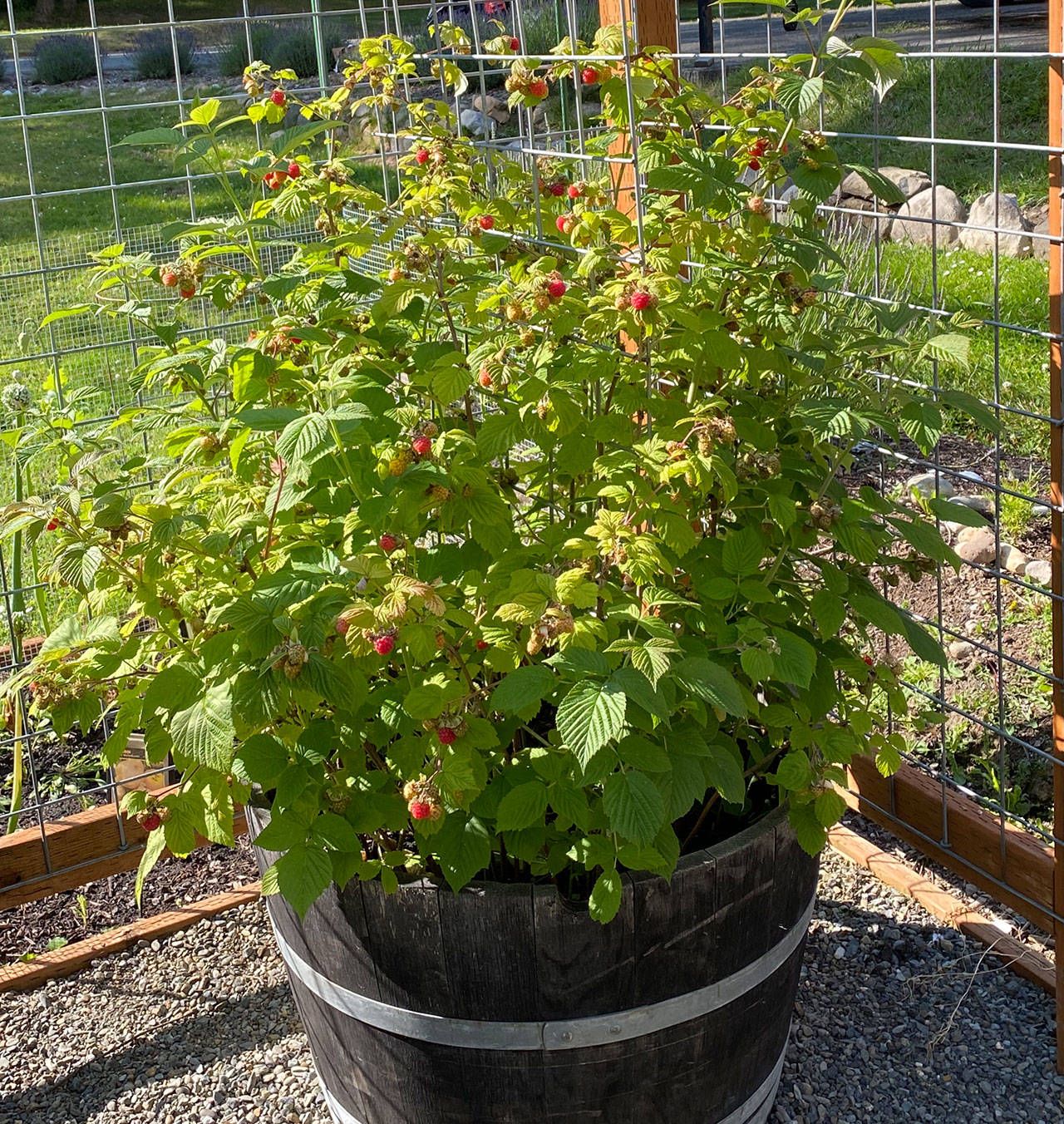Berries are a great addition to any garden. Although berry plants are most productive when planted in the ground, there are good reasons to grow them in containers.
You might grow berries in pots because your garden space is limited or the soil in your garden is not suited for the type of berries you want to grow (for example, not acidic enough for blueberries).
Growing berries in containers close to your house can provide easy access for care and harvest and might even deter a few four-legged pests.
Finally, berries (and often the plants they grow on) are attractive and eye-catching. Growing them on your front porch, deck or patio can add ornamental value to your home and surroundings.
Although many berries can be grown successfully in containers, it is best to select varieties that are smaller and more compact (see sidebar).
Day-neutral strawberries produce fewer runners than June-bearing strawberries. They also produce strawberries throughout the growing season.
Alpine strawberries are mounding plants, only a foot in diameter. They rarely produce runners and produce throughout the growing season.
Half-high and dwarf blueberries top out at 3 or 4 feet compared to northern highbush blueberries that easily can achieve 6 feet in height.
Evergreen blueberries (which hold their leaves year-round in some settings) tend to be compact plants. Choose the variety carefully because some are not well-adapted to our region.
Newly released dwarf raspberries and blackberries have a compact growth habit, reaching only 2-4 feet in height. The bonus is that these varieties are thornless.
Plant your berries in containers large enough to accommodate the roots and transplant to larger containers, as needed. Even the smaller, compact varieties will do best when planted in a 24- to 36-inch diameter container. If you choose to grow full-sized varieties such as Northern highbush blueberries you will need to grow the plants in half wine barrels.
Make sure your container has drainage holes since berries don’t like wet feet. Use high quality potting soil as opposed to garden soil because it drains better and has been treated so as not to carry diseases or pests. For blueberries, use a soil made for acid-loving plants such as rhododendrons, azaleas and camellias.
Locate your containers in full sun. Although most berries tolerate a little shade, they produce best with 6 or more hours of sun a day. If sun exposure is not good close to your house, consider putting the containers on a wagon or cart and “follow the sun,” moving them from sunny spot to sunny spot throughout the day.
Water your plants so that the soil remains moist but not soggy. Because soil in pots usually dries out faster than in the ground, check your pots frequently. During dry periods you might need to water daily.
In general, berries are not heavy feeders, but frequent watering can leach nitrogen from the soil. For strawberries, raspberries and blackberries apply a balanced fertilizer (with equal amounts of nitrogen, phosphorus and potassium) in early and late spring. Blueberries prefer a fertilizer that provides nitrogen in the form of ammonium such as ammonium sulfate which also acidifies the soil.
Although the smaller varieties recommended for container planting might not require staking or trellising, your container grown berries still need pruning like their full-sized counterparts. For example, second-year canes should be removed from raspberries and blackberries after the harvest.
Finally, plants in containers are at a greater risk of cold injury than plants in the ground because the roots are more exposed. In winter, move your container to an unheated garage or wrap the pot with bubble wrap or newspaper to protect the roots.
Growing berries in containers is fun and rewarding. With the right variety and a little forethought, you’ll soon be picking plump, juicy berries from right outside your door!
Jeanette Stehr-Green is a WSU-certified Clallam County Master Gardener.


